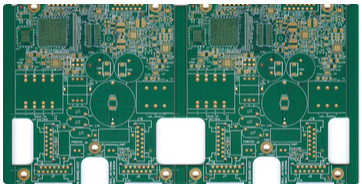Introduction to the self-inspection process of PCB design
1. Structural design
1) Check the PCB floor plan and the printed structure drawing;
2) Check the position and diameter of the mounting hole;
3) Check the wiring constraint area.
2. Component library
1) Check component size;
2) The silk screen frame of the BGA device is strictly in accordance with the DATA SHEET size;
3) The pin number of the component is the same as the definition of DATA SHEET;
4) Check MALE/FEMALE (male and female);
5) The transistor pins have been compared with DATA SHEET;
6) The first pin of the IC or multi-PIN connector is a square pad;
7) Silkscreen logo with clear polar components;
8) Check the position and diameter of component positioning holes.

3. Component layout
1) The components do not overlap;
2) The gap between components is not less than 8mil;
3) Check the components in accordance with the requirements of the forbidden zone;
4) The screws of structural parts will not be pressed on the line;
5) Decoupling capacitors have been placed near the relevant components;
6) A 1mm or 1.5mm MARK point has been placed on the diagonal of the PCB.
4. PCB wiring
1) Check the wiring in accordance with the requirements of the forbidden area;
2) The wiring of adjacent layers is perpendicular to each other;
3) The key signal lines have been checked one by one;
4) Parallel wiring and equal length of differential signal;
5) The capacity of the power cord has been checked;
6) The sampling resistor is individually wired to the sampling point;
7) Remove dead copper when applying copper.
5. Solder mask
1) The green oil window is 2mil larger than the pad;
2) BGA only expands by 1mil;
3) The smallest green oil bridge is 5mil;
4) The green oil window and PASTE layer have been opened on the RF power amplifier IC heat sink;
5) The metal shield frame has opened the green oil window and PASTE layer;
6) All vias (Via) have been defined as TENTING.
6. Silk screen layer
1) The silk screen is not pressed on the pad;
2) The text of the silk screen has been sorted out;
3) [Heingt] of silk screen characters cannot be less than 20mil, [Width] cannot be less than 5mil, text less than 6mil is closed;
4) The board number and other information are placed in a prominent position.
7. Via
1) Check the through holes of the plug-in parts one by one;
2) The capacity of the vias on the power cord should be considered;
3) The mounting hole is defined as NPTH, otherwise there must be at least 4mil hole ring;
4) No vias are superimposed on the pads to ensure that no tin leakage occurs during soldering;
5) If the via needs to be superimposed on the pad, the COPPER needs to be turned off.
8. Gerber file
1) Check the Gerber file layer by layer;
2) Check the Gerber file by stacking;
3) The green oil bridge represented by the Gerber file is greater than 5mil.
9. Check the PCB archive files that need to be output
2) DRC;
3) Gerber;
4) Drilling file;
5) Jigsaw diagram;
6) Plate making instructions.
The above are some of the contents that need to be paid attention to during PCB self-inspection. Of course, certain contents may not need to be inspected in some cases, such as the inspection items of the solder mask, the PICK PLACE of the output file, and the board drawing.
Of course, it is best to have a full-time staff to review the PCB, the review mainly focuses on the following:
1) Consistency with the structure diagram;
2) Consistency with the standard library;
3) Consistency with conventional design requirements;
4) The inspection status of light painting files and graphics;
5) Inspection of drilling files and steel mold files;
6) Completeness of the submitted review documents (Layout documents, structure diagrams, technical requirements form, etc.);
7) Print 1:1 layout drawing and comparison of physical components;
8) Consistency with technical requirements.